Northern Lights – The Form of the Visible
Fruitmarket Gallery, Edinburgh, 7 December 1996 – 1 February 1997
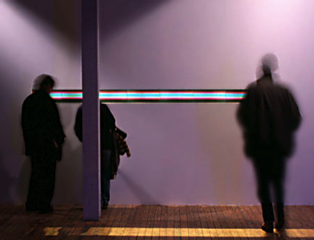
The Form of the Visible, Wenyon & Gamble, 1996
A free-standing wall containing holograms,
lighting and photographic transparencies.
The wall is 3 m high (10') and 4.8 m long (16')
The front of the wall offers the concrete phenomena of the spectrum itself, a luminous strip of primary colors spanning the width of the wall but seemingly detached from it. Behind the wall, artists' depictions of the rainbow of nature are visible through small tubes set into the wall. Back-illuminated slides reproduce such paintings as "The Eildon Hills, and Tweed", 1807, by James Ward.
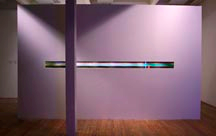
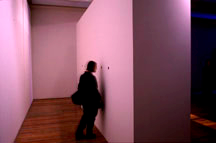
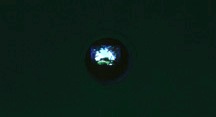
Landscape with Rainbow, Joseph Wright of Derby 1734 -1797
The Eildon Hills and Tweed, 1807, James Ward
Salisbury Cathedral from the Meadows, 1831, John Constable
untitled sky study, John Constable, 1776-1837
Rainy Season in the Tropics, 1866, Frederic Edwin Church
The Rainbow, Georges Seurat
Rainbow over Buttermere, J Turner
Optical Experiments, 1994/96
Two transparent back-lit Gabor holograms (by the technique of the inventor of holography (1948))
A viewer sees into these images, towards a distant illumination which becomes part of the work. Receding in the space, bright discs resemble lunar or solar images, or allude to lenses, optical benches. They are recordings of astronomical photographic plates with details--photographic images of stars--visible within them.
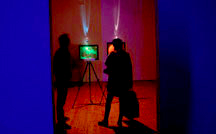
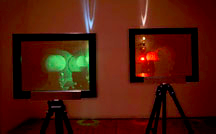
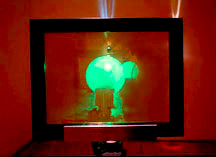
Acknowledgements: The works of Wenyon & Gamble were supported by: Agfa-Gevaert Ltd, The Leverhulme Foundation, The Royal Observatory Edinburgh and The Scottish Arts Council.
